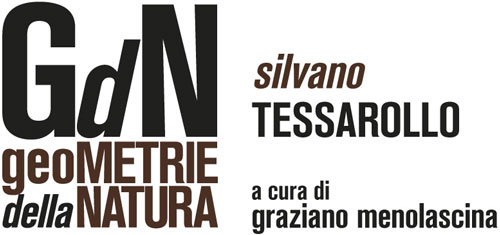by Graziano Menolascina
Paolo Tonin Contemporary Art Gallery (Torino), in conjunction with the Night of the Arts (Saturday, November 5th 2016)
naugurates Silvano Tessarollo’s new project, an exhibition that marks an essential moment of artistic transition. The new skin is different, plays new aesthetic concepts; the work is no longer confined to the canonical space, but extends itself creating a direct relationship with the reality of space in order to establish a direct connecting and conditioning line. He puts his finger in the pie, leaving a clear blueprint throughout the space that surrounds himself, with the desire to create new paths never explored before. It is evident that the scene is disproportionately amplified, but always respecting the classic canons of design and construction. Unlike the trends developed since 2000 until today, Tessarollo does not allow the creature to be manipulated or delegated to others based only on a conceptual process, but as the old times he gets his hands dirty in first person. In fact we find obvious references to the traditional concept of making art that goes from the planning perspective, to the design, up to the obsessive study of space.
These stylistic features and the complete symbiosis with the place, Silvano Tessarollo’s work gives away voluntarily his autonomy in order to create a path that allows the birth of a new landscape, both real and surreal at the same time, where art is not taken for granted, but it is waiting to be discovered. We understand his rejection for the beautiful form by submitting his own research to ongoing investigations and developments. His action is configured, every time, in a different way compared to the space, bringing out a specific feature that you cannot program or make systematic, as it always eludes the easy solutions. In “Geometry of nature” we dust off one of the many themes of classical art that we usually call under the term “Still life”.
In this case the artist forges a new term: “Living nature” because all the materials used for the realization of the works have their natural life cycle, changing from time to time their bio-physical connotations, not as in the past when he used to manage dead and static objects only which refer to the inventories of the ancient collections.
There is a detailed analysis, a survey that tracks masterly the results of the painting compared with those of poetry or classical literature. Flowers, grass, dirt, objects and materials, become just as in the past from the post-impressionist Paul Gauguin to the poverist Jannis Kounellis, an experimental way from the possible formal relations within a field of view, becoming part of a new form of art, that in a different way projects both in the past and in the future at the same time, remaining alien to progress, or even in the unconscious and in the anxieties of contemporary civilization.

